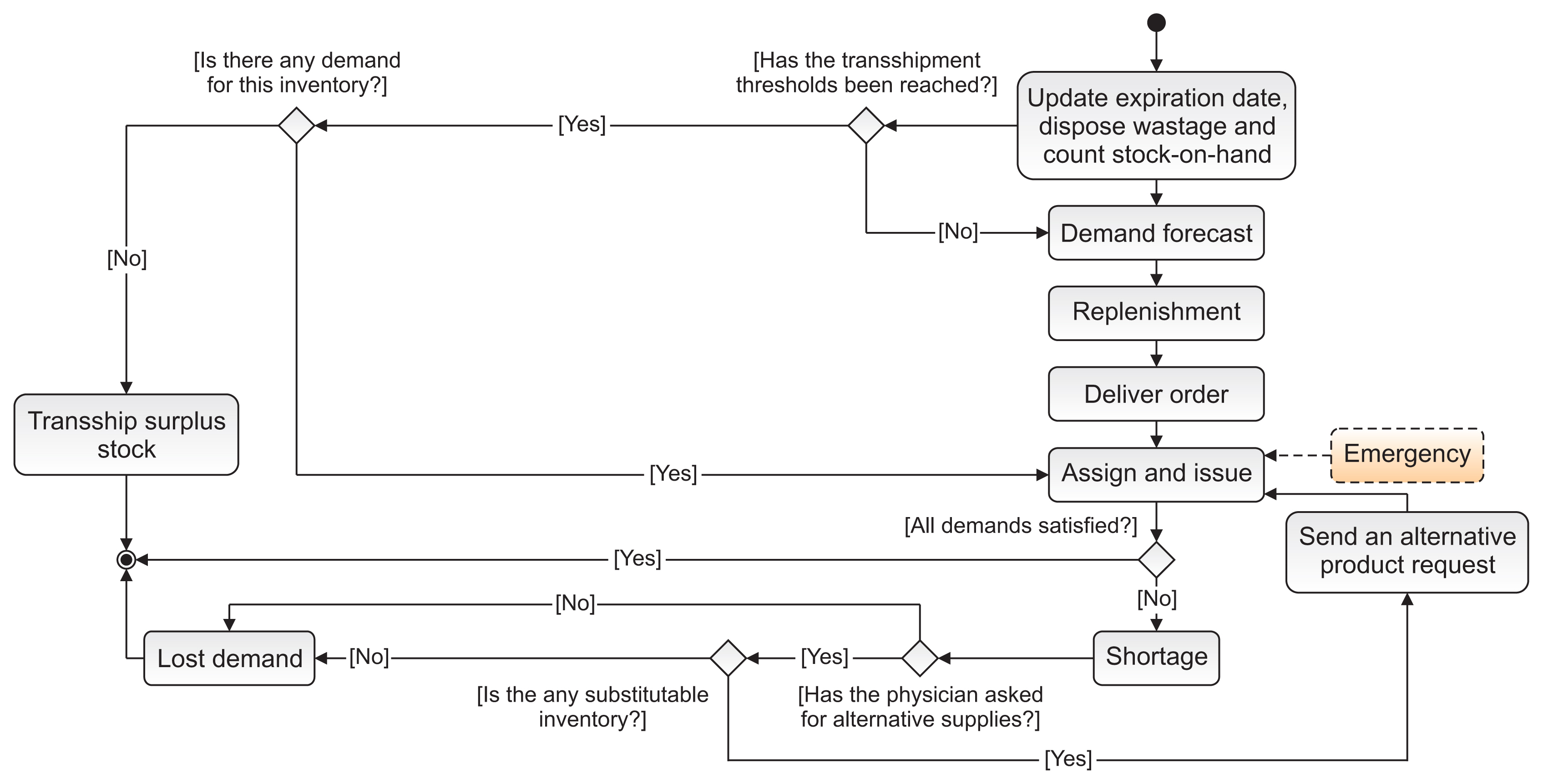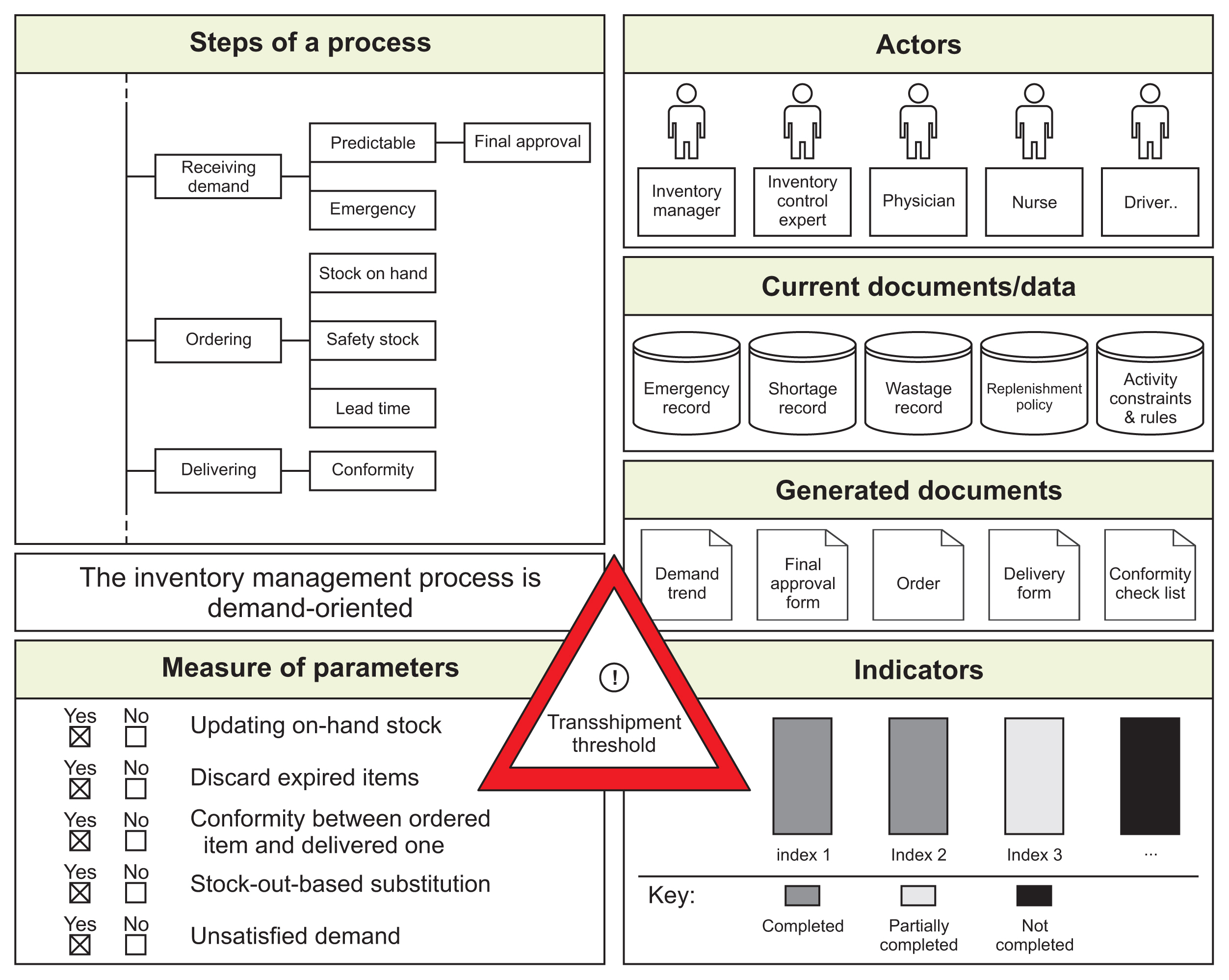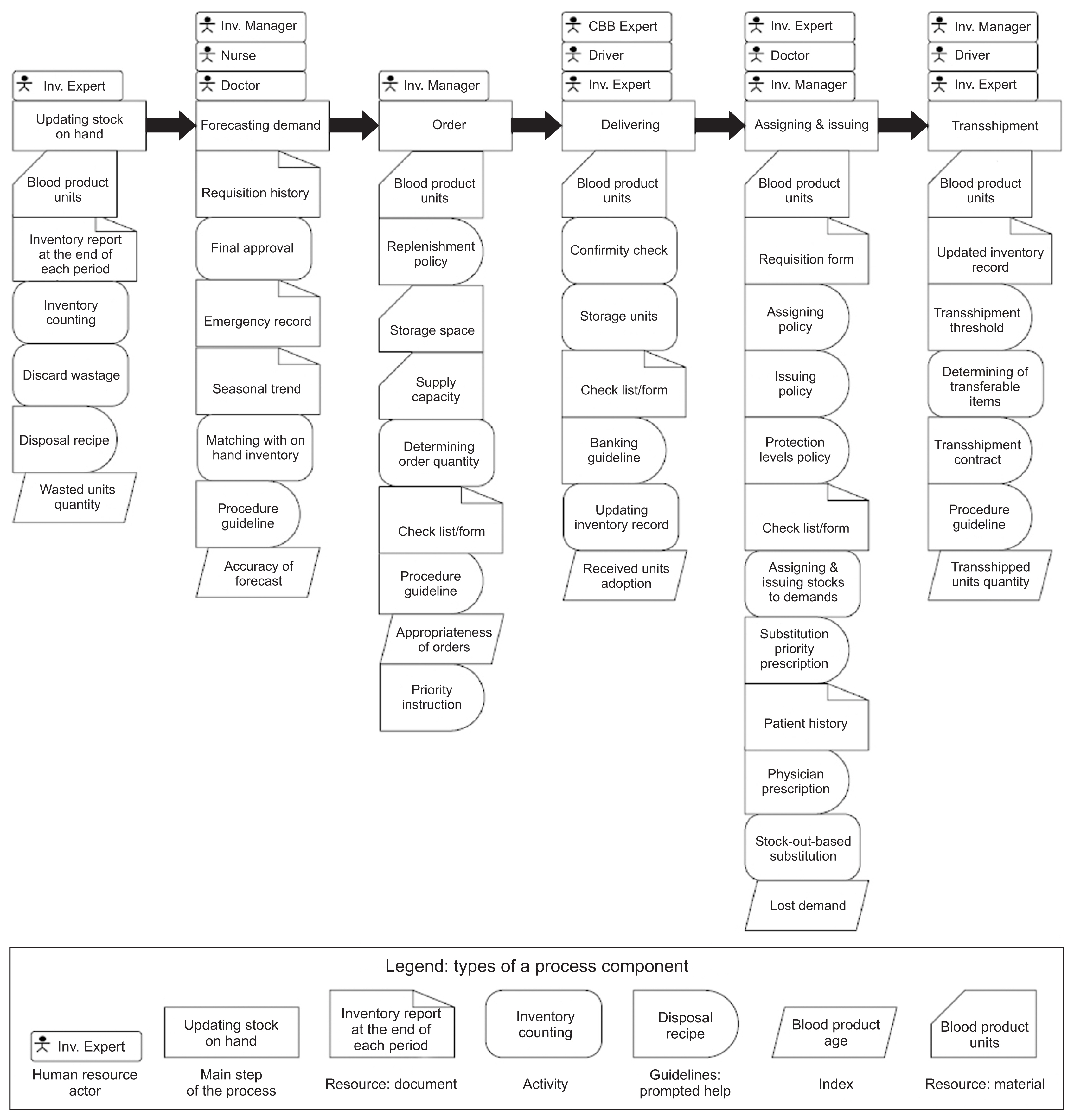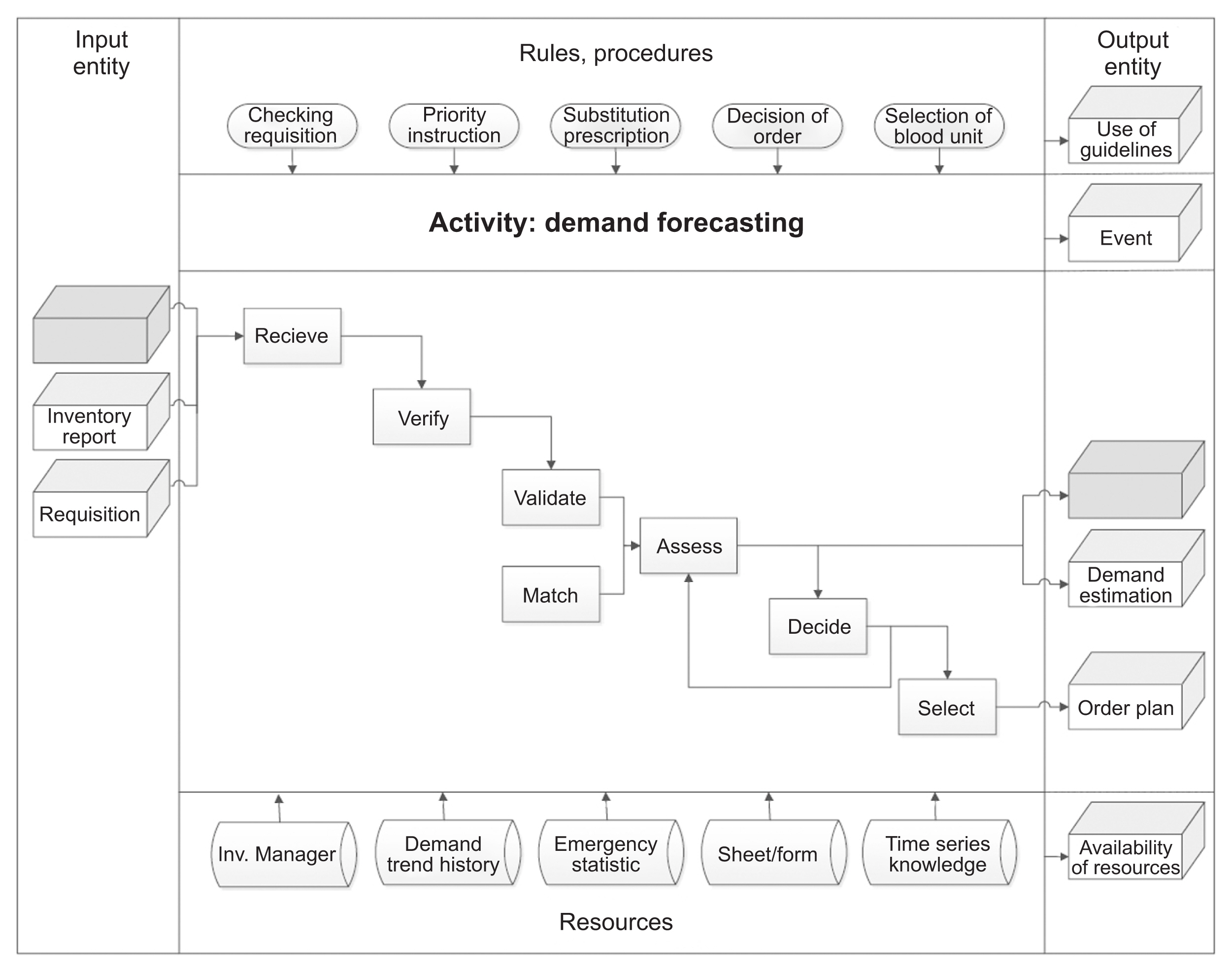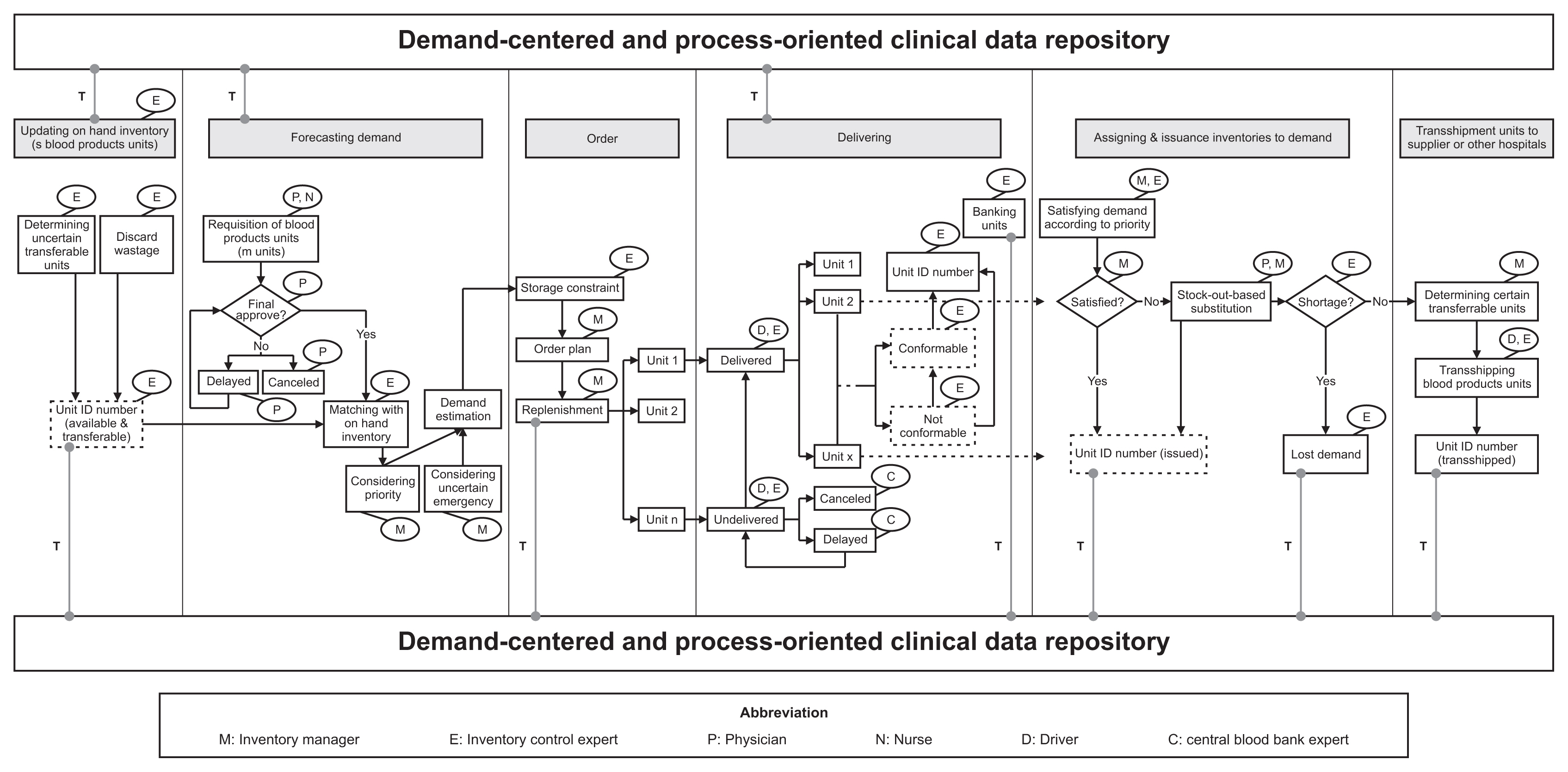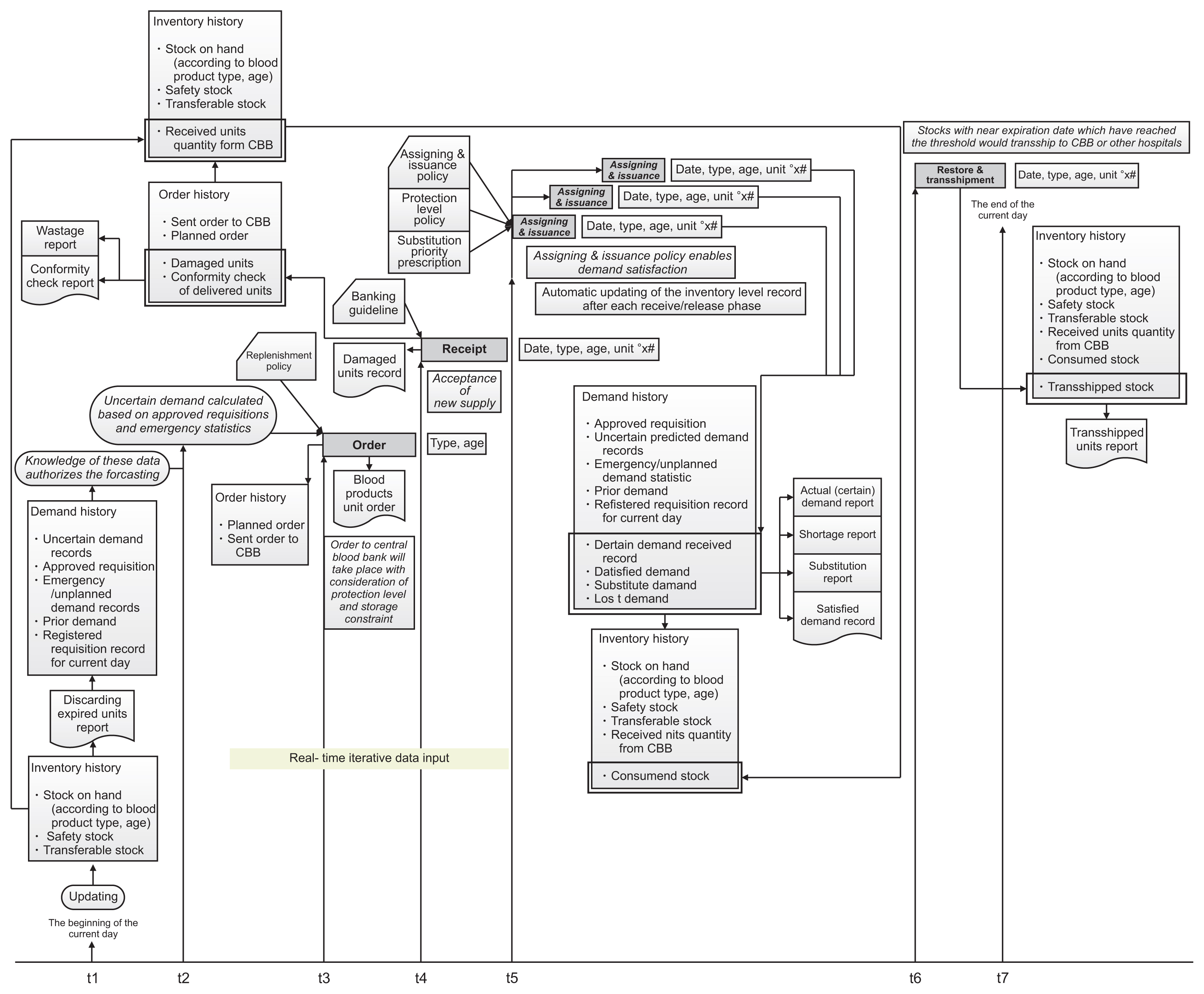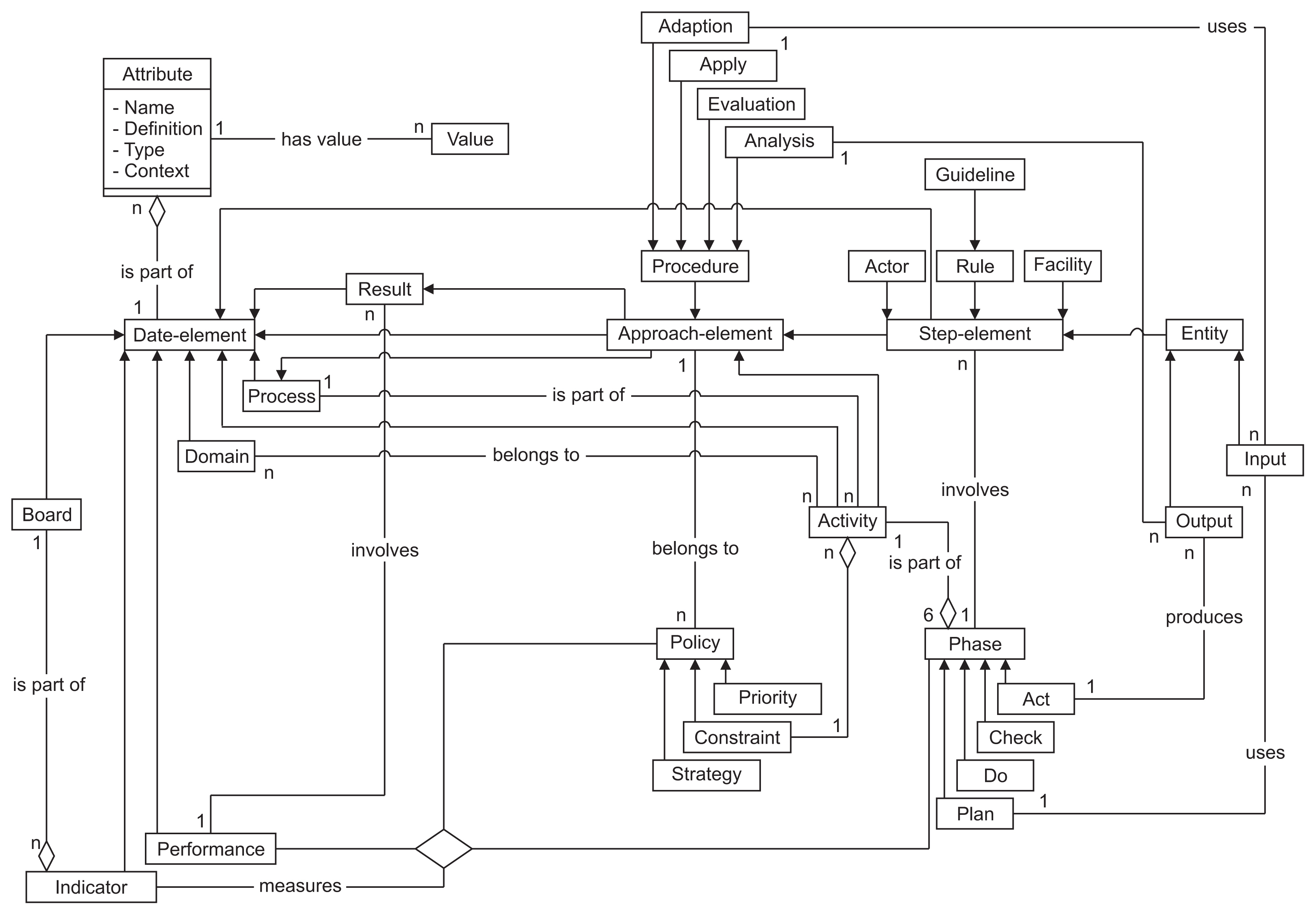Healthc Inform Res.
2021 Jan;27(1):73-81. 10.4258/hir.2021.27.1.73.
Dynamic Demand-Centered Process-Oriented Data Model for Inventory Management of Hemovigilance Systems
- Affiliations
-
- 1Faculty of Industrial and Mechanical Engineering, Qazvin Branch, Islamic Azad University, Qazvin, Iran
- 2Department of Industrial Management and Information Technology, Management and Accounting Faculty, Shahid Beheshti University, Tehran, Iran
- KMID: 2512627
- DOI: http://doi.org/10.4258/hir.2021.27.1.73
Abstract
Objectives
This paper presents a reference data model for blood bank management to control blood inventories considering real-world uncertainties and constraints. It helps information systems identify blood product status for various critical decisions (such as replenishment, assignment, and issuing) instantly. Additionally, some significant optimization concepts of the inventory management literature for blood wastage and shortage reduction, such as clearance sale and substitution based on medical priorities, are applied in the model.
Methods
The proposed model was constructed by object-oriented and ICAM (Integrated Computer Aided Manufacturing) definition ɸ (IDEF0) techniques for function modeling. Through semi-structured questionnaires and interviews, the research team elicited and classified user requirements. Then, the demand-centered sub-processes and comprehensive functions were mapped to manage the process.
Results
The model captures and integrates the top-level features of the inventory system entities. It also provides insights into a developed data dictionary to understand the system’s elements and attributes, where a data item fits in the structure, and what values it may contain. For designing the system’s process and following-up data, the main relevant inputs are considered.
Conclusions
A flexible and applicable demand-centered framework for managing a typical blood bank’s inventory process was developed by focusing on user requirements. The proposed model can be applied to design and monitor inventory information and decision-support systems. The model provides real-time iterative dynamic process insights. It can also provide the data needed for logistic planning systems and the design of blood operational infrastructure.
Figure
Reference
-
References
1. Hosseini-Motlagh SM, Samani MR, Homaei S. Blood supply chain management: robust optimization, disruption risk, and blood group compatibility (a real-life case). J Ambient Intell Humaniz Comput. 2020; 11(3):1085–104.
Article2. Haeri A, Hosseini-Motlagh SM, Ghatreh Samani MR, Rezaei M. A mixed resilient-efficient approach toward blood supply chain network design. Int Trans Oper Res. 2020; 27(4):1962–2001.
Article3. Jensen HG. IT in Blood banks, at present and tomorrow: a Nordic perspective. ISBT Sci Ser. 2020; 15(1):52–8.4. Staccini P, Joubert M, Quaranta JF, Fieschi D, Fieschi M. Modelling health care processes for eliciting user requirements: a way to link a quality paradigm and clinical information system design. Int J Med Inform. 2001; 64(2–3):129–42.
Article5. Miah SJ, Hasan N, Gammack J. Follow-up decision support tool for public healthcare: a design research perspective. Healthc Inform Res. 2019; 25(4):313–23.
Article6. Sligo J, Gauld R, Roberts V, Villa L. A literature review for large-scale health information system project planning, implementation and evaluation. Int J Med Inform. 2017; 97:86–97.
Article7. Goossen WT. Detailed clinical models: representing knowledge, data and semantics in healthcare information technology. Healthc Inform Res. 2014; 20(3):163–72.
Article8. Kwon IH. Book Review: Process mining: discovery, conformance and enhancement of business processes. Healthc Inform Res. 2014; 20(2):157–8.
Article9. Pakdil F, Harwood TN, Isin FB. Implementing lean principles in the healthcare industry: a theoretical and practical overview. Wickramasinghe N, Bodendorf F, editors. Delivering superior health and wellness Management with IoT and analytics. Cham, Switzerland: Springer;2020. p. 383–413.
Article10. dos Santos Garcia C, Meincheim A, Junior ER, Dallagassa MR, Sato DM, Carvalho DR, et al. Process mining techniques and applications: a systematic mapping study. Expert Syst Appl. 2019; 133:260–95.11. Kim E, Kim S, Song M, Kim S, Yoo D, Hwang H, et al. Discovery of outpatient care process of a tertiary university hospital using process mining. Healthc Inform Res. 2013; 19(1):42–9.
Article12. Pereira Detro S, Santos EA, Panetto H, Loures ED, Lezoche M, Cabral Moro Barra C. Applying process mining and semantic reasoning for process model customisation in healthcare. Enterp Inf Syst. 2020; 14(7):983–1009.
Article13. Quinn JG, Conrad DM, Cheng CK. Process mining is an underutilized clinical research tool in transfusion medicine. Transfusion. 2017; 57(3):501–3.
Article14. Farrugia B. WASP (write a scientific paper): Sampling in qualitative research. Early Hum Dev. 2019; 133:69–71.
Article15. Baghbani M. IDEF0 Modeling Standard: a tool for process map drawing under requirements of ISO 9001: 2015: a case study. J Mod Process Manuf Prod. 2019; 8(4):57–66.16. Walker AE, Grimshaw J, Johnston M, Pitts N, Steen N, Eccles M. PRIME: Process modelling in ImpleMEntation research: selecting a theoretical basis for interventions to change clinical practice. BMC Health Serv Res. 2003; 3(1):22.
Article17. Blaschek G. Object-oriented programming: with prototypes. New York (NY): Springer Science & Business Media;2012.18. Ayatollahi H, Hosseini SF, Hemmat M. Integrating genetic data into electronic health records: medical geneticists’ perspectives. Healthc Inform Res. 2019; 25(4):289–96.
Article19. Priestley M. Practical object-oriented design with UML. Boston (MA): McGraw-Hill;2003.20. Cheng C, Kumar-Misir A, Watson S, Macleod J, Sadek I. Evaluation of the real-world impact of the process mining methodology on a quality assurance process for auditing red blood cell inventory: two case studies. Can J Pathol. 2017; 9(Suppl):28–9.
- Full Text Links
- Actions
-
Cited
- CITED
-
- Close
- Share
- Similar articles
-
- Demand Forecasting for Developing Drug Inventory Control Model in a University Hospital
- Factors Influencing on Operation Efficiency of Information Management System for Supply and Demand of Materials at Health Care: Case Study in General Hospitals of Daejeon City
- The influence of professional competency, professional commitment, and nursing organizational culture on the person-centered practice of nurses in long-term care hospitals: A cross-sectional study
- Blockchain Revolution in Healthcare : The Era of Patient-centered Dental Information System
- Factors Associated with Person-Centered Care among Care Workers at Long-term Care Facilities

